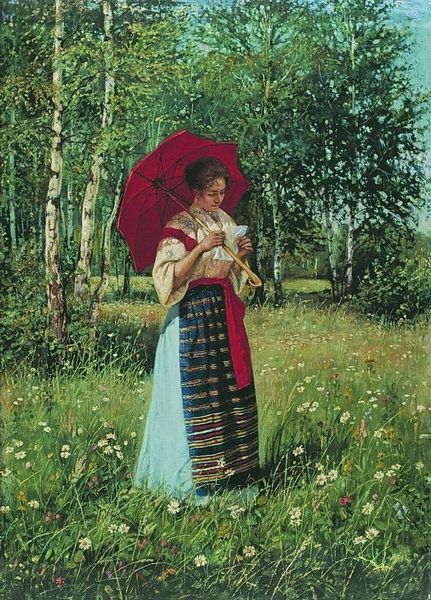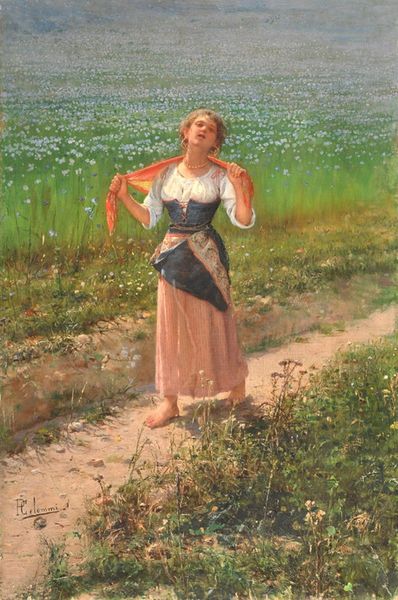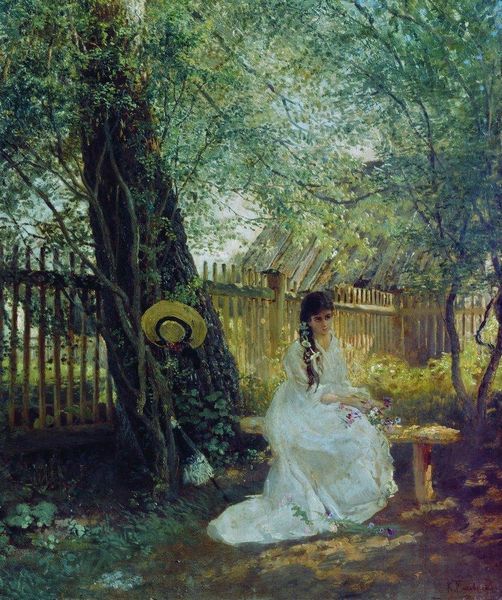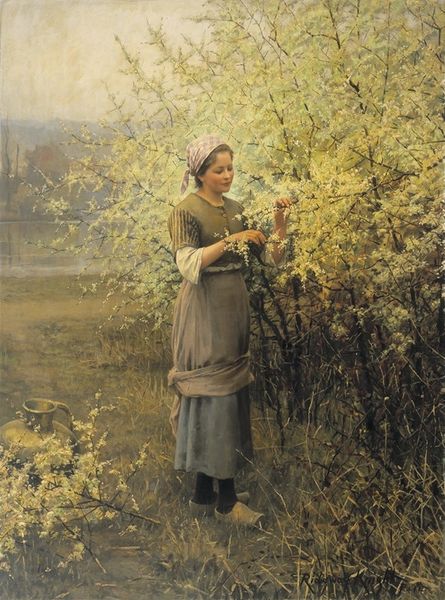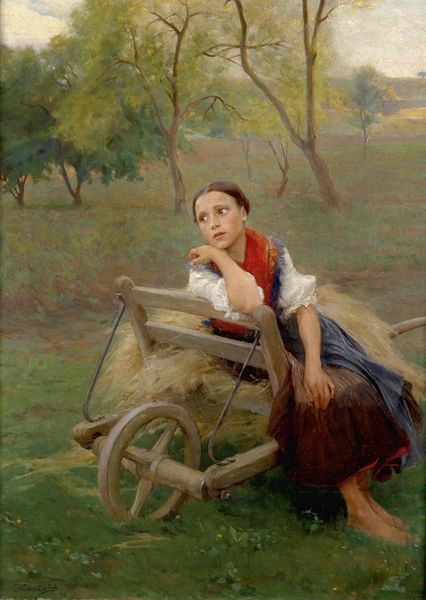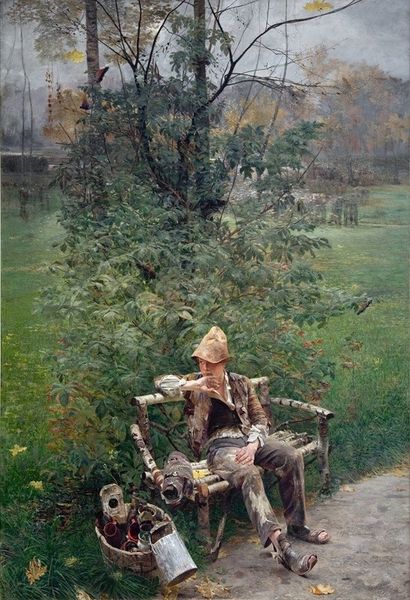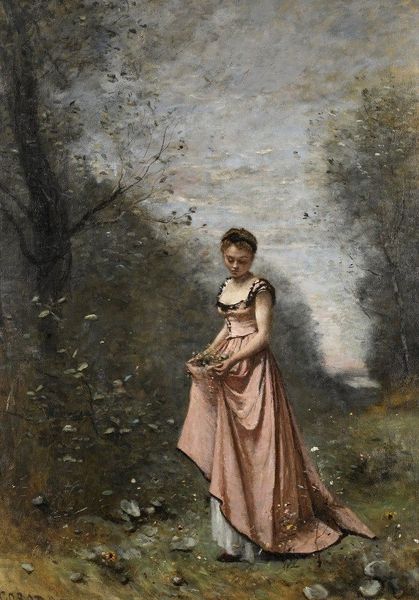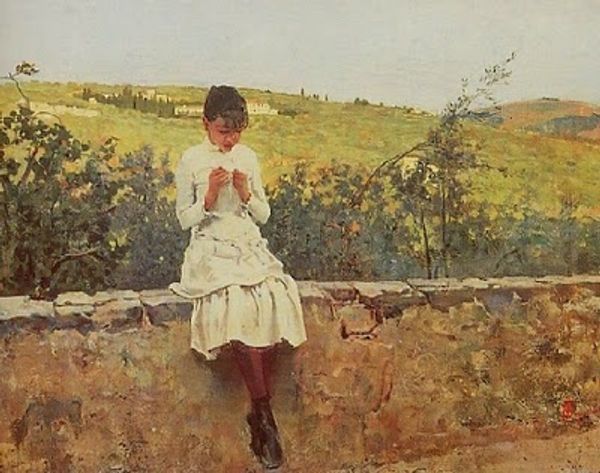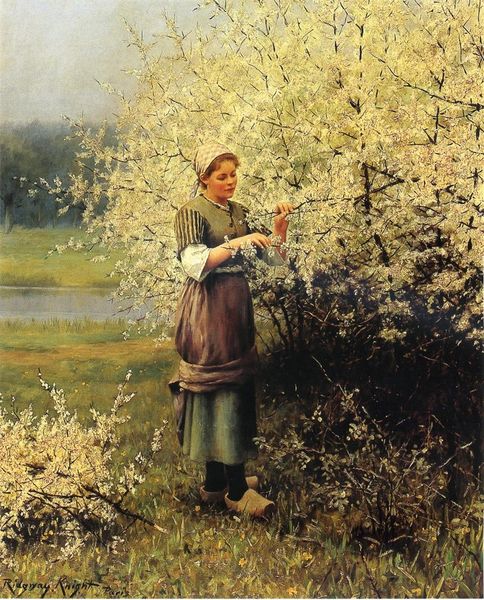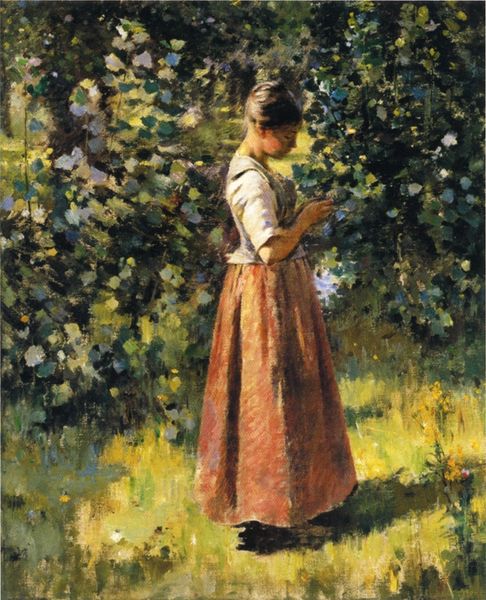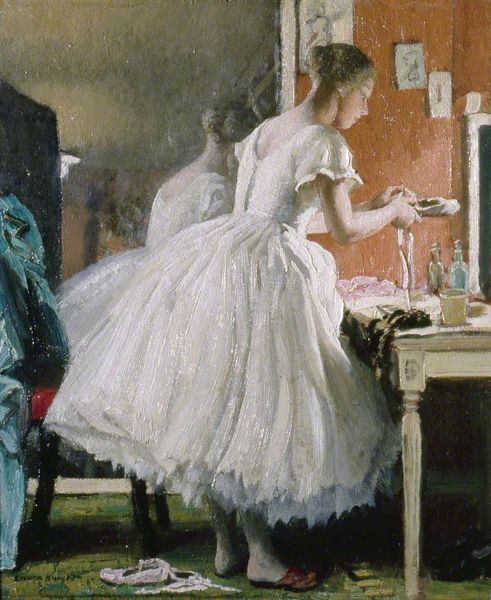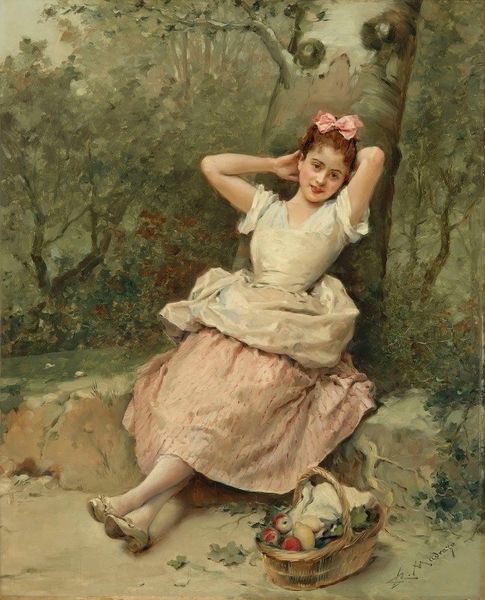
painting, plein-air
#
figurative
#
painting
#
impressionism
#
plein-air
#
landscape
#
figuration
#
genre-painting
Copyright: Public Domain: Artvee
Curator: This is Winslow Homer’s “The Dinner Horn,” painted around 1870. What strikes you first about this genre scene? Editor: I’m immediately drawn to the interplay of light and shadow. There’s something almost cinematic in how the bright dress of the woman contrasts against the darker hues of the surrounding nature and building. Curator: Absolutely. Homer captures a slice of rural, potentially agrarian life here, one steeped in specific gender roles and societal expectations, especially considering the economic structures after the Civil War. A woman, dressed in white, stands at the edge of a farmhouse, blowing a horn to call workers in from the fields for their midday meal. The scene depicts labor, gender, and place, so let’s think of labor and leisure together as depicted in art history. Editor: True, and visually, there’s a clear compositional structure – the vertical of the building against the horizontal of the field, bisected by her figure. It feels balanced, stable… almost timeless. It captures an idyllic simplicity through form, structure, and visual storytelling. Curator: The seeming simplicity, though, belies complex issues. What does it mean for the labor and gender in the construction of America, when her role is supportive and reproductive within a very specific gender division? The painting raises questions about women’s limited sphere in this era and perhaps, if we are daring, the erasure of women’s hard labor to keep a domestic scene of simple living in its appeal for the time. The choice of rendering her in white could be interpreted as highlighting ideals of purity, domesticity, perhaps race and class associations in its historical moment as well. Editor: Interesting, but I see the whiteness functioning more to highlight the form, providing the focal point of an otherwise natural landscape filled with darker hues. By isolating this moment in time, it elevates an everyday occurrence by drawing attention to the line, texture, and chromatic harmony. There’s such beauty of technique in it all! Curator: These visual devices, and the artist’s formal strategies, served larger socio-cultural functions. Paying attention to how he positions the figure within her milieu is indicative of both the power of the artistic imagination but also, how gender ideology is produced through popular image making in post-Civil War America. Editor: Regardless of interpretations, it leaves a sense of wistful tranquility, don’t you agree? A pastoral dream… Curator: Indeed. Seeing how those artistic strategies reflect historical dynamics enriches the experience, creating critical discussions and revealing how aesthetics and broader social systems intertwine in unique ways.
Comments
No comments
Be the first to comment and join the conversation on the ultimate creative platform.

